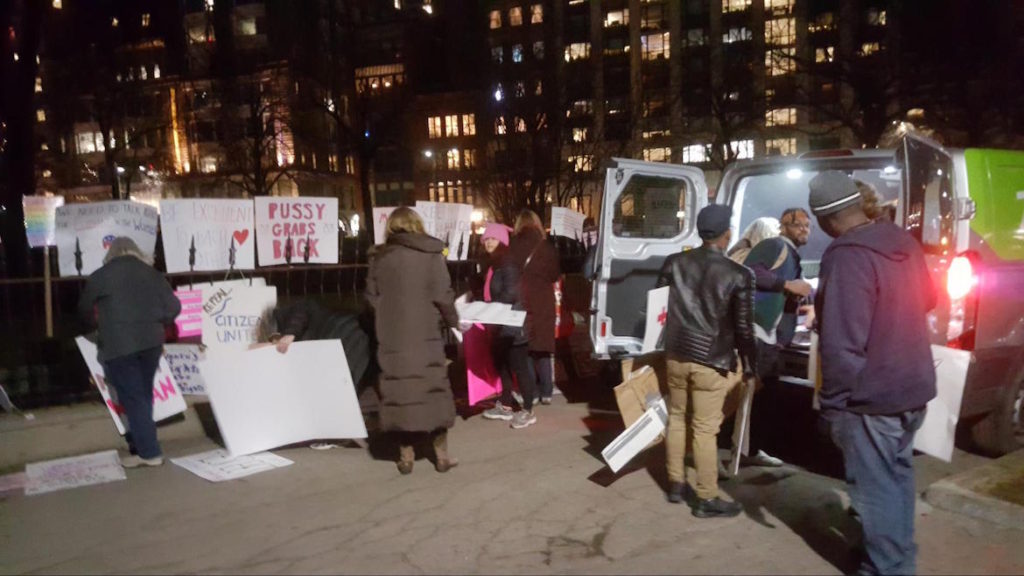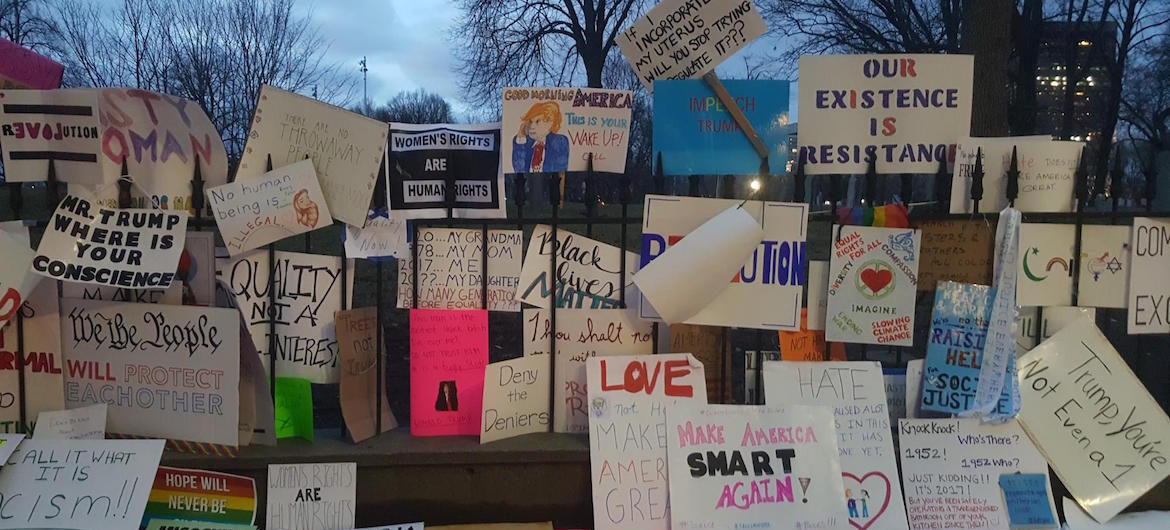After the 2017 Boston Women’s March, thousands of participants left their protest signs around the iron fence surrounding the Boston Common Central Burying Ground. They were going to be thrown away … until three local teachers came along.
“Towards the end of the march in Boston, me and few colleagues and friends found an impromptu exhibition of the posters that had been arranged all around the perimeter of the Boston Commons and because we found out that they were going to be destroyed, we decided to rescue the signs,” Alessandra Renzi—who initiated and produced the project with her colleagues Dietmar Offenhuber and Nathan Felde—says in a documentary video about their effort.

The trio of Northeastern University professsors got permission from city workers to collect the signs for posterity. People pitched in to help them load some 6,000 posters into a rented van to be taken away for safekeeping. These have now been digitally scanned to create a browsable, online public archive called “Art of the March.”
Renzi says, “They valorize the fact that protest is a very important tool to retain the democratic structures in society.”
Offenhuber says in the video, “The one thing that really made this collection unique [is] that it’s almost like a complete snapshot. It’s not just taking the 30 best signs or the most representative signs but taking everything. So you have kind of a complete sample of what the march looked like.”
Art of the March from Emily Gordon on Vimeo.
Previously:
- Best Signs From The 2018 Cambridge/Boston Women’s March.
- 2018 Cambridge/Boston Women’s March: ‘We’re Still Here. We’re Still Marching. And We Are Winning.’
- The Pink Pussyhat—Icon Of The Women’s Marches—Is Featured At Fuller Craft Museum.
- Best Signs at the 2017 Boston Women’s March.
- 2017 Boston Women’s March of America.
If you dream of a better country, support alternative media. Help us keep producing our great coverage of local activism and arts by contributing to Wonderland on Patreon. And sign up for our free, weekly newsletter so that you don’t miss any of our reporting.
